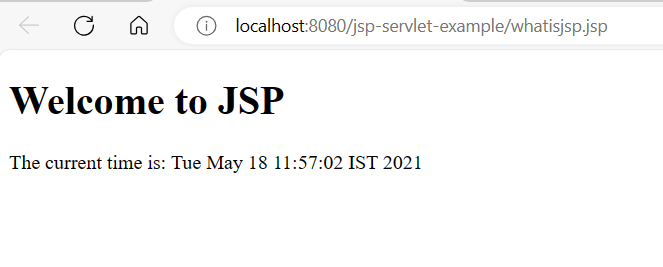JavaServer Pages (JSP) is a technology used to create dynamic web content in Java. It’s a part of the Java EE (Enterprise Edition) platform and simplifies the process of developing web applications.
Key Points about JSP
- Combines HTML and Java: JSP allows developers to write HTML pages that include Java code. This makes it easy to create interactive and dynamic web pages.
- Server-Side Scripting: Unlike client-side scripts (like JavaScript), JSP runs on the server. When a user requests a JSP page, the server processes the Java code and sends back an HTML page to the user’s browser.
- Easy to Learn: If you know HTML and Java, learning JSP is straightforward. You can embed Java code directly within HTML using special tags.
- Reusable Components: JSP supports reusable components like JavaBeans, custom tags, and tag libraries, which promote clean and modular code.
- MVC Architecture: JSP often works with servlets to implement the Model-View-Controller (MVC) design pattern. JSPs handle the View (presentation), while servlets handle the Controller (logic) and interact with the Model (data).
Basic Structure of a JSP File
A typical JSP file has a .jsp extension and contains a mix of HTML and Java code.
Following is a simple example:
<%@ page language="java" contentType="text/html; charset=UTF-8" %>
<!DOCTYPE html>
<html>
<head>
<title>Welcome</title>
</head>
<body>
<h1>Welcome to JSP</h1>
<p>The current time is: <%= new java.util.Date() %></p>
</body>
</html>- Directives (
<%@ %>): Set page-level settings, like the language used (Java). - Scriptlets (
<% %>): Contain Java code snippets. In the example,<%= new java.util.Date() %>inserts the current date and time. - Expressions (
<%= %>): Evaluate and output Java expressions directly to the HTML.
Output

Benefits of Using JSP
- Separation of Concerns: Keeps the presentation layer (HTML) separate from the business logic (Java).
- Scalability: Suitable for building large, scalable web applications.
- Integration: Easily integrates with other Java technologies and frameworks, such as Spring and Hibernate.
Conclusion
JSP is a powerful tool for Java developers looking to build dynamic web applications. Its integration of HTML and Java makes it an ideal choice for creating interactive, server-side web pages. Understanding JSP is a valuable skill for any aspiring web developer in the Java ecosystem.